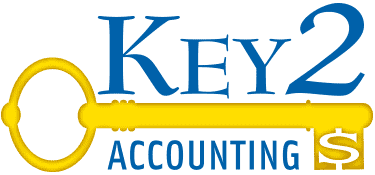If you are the owner of a small business that obtained a Paycheck Protection Program (PPP) loan, you are most likely aware that the loan can be partially or totally forgiven if you used the loan proceeds for the required purposes. Loan forgiveness is not automatic and must be applied for. The borrower must submit a request to the lender or, if different, the lender that is servicing the loan, which then must make a decision upon the amount of forgiveness within 60 days.
The request must include documents to verify the number of full-time-equivalent (FTE) employees and pay rates, as well as the payments on eligible mortgage, lease, and utility obligations. The borrower must certify that the documents are true and that the borrower used the forgiveness amount to keep employees and make eligible mortgage interest, rent, and utility payments. We are recommending that you hold off until your banker specifically requests that you’ve been selected to provide an application.
The whole process of obtaining a PPP loan and applying for forgiveness has been complicated from the start, with guidance from the Small Business Administration (SBA) and the IRS coming in dribs and drabs; for a while, it seemed that the rules were modified every week. Allow us to take the head ache of this process away. Our PPP Loan Forgiveness Preparation Service starts at $250. Please contact melissa@key2accounting.com for more details.
The SBA was required to simplify the forgiveness application.
The 3508EZ is for use by:
• Self-employed borrowers with no employees
• Generally, borrowers with employees that, during the covered period,
• Did not reduce the annual salary or hourly wages of any employee by more than 25%;
• Did not reduce the number of employees or the average paid hours of employees; and
• Was unable to operate during the covered period at the same level of business activity as it did before February 15, 2020, due to compliance with requirements established or guidance issued by the Secretary of Health and Human Services, the director of the Centers for Disease Control and Prevention, or the Occupational Safety and Health Administration.
During the week of October 5th, the SBA released yet another simplified application—SBA Form 3508S—along with instructions for its use. This form can only be used if the total PPP loan amount that the borrower received from their lender was $50,000 or less. However, a borrower that, together with its affiliates, received PPP loans totaling $2 million or more cannot use Form 3508S and instead must use either Form 3508 and its instructions or 3508EZ and its instructions (or their lender’s equivalent form).
Who qualifies for loan forgiveness through the grant process?
To be eligible to convert to a grant, the money borrowed though the PPP must be used primarily to cover payroll along with some other expenses such as rent, utilities and interest on a mortgage. The payroll amount can include health care and retirement benefits, and state and local payroll taxes paid by the employer. That payroll calculation for PPP forgiveness also can include owner compensation. The non-payroll expenses cannot be more than 40% of the amount asked for forgiveness.
The money generally also has to have been spent during a 24-week period that started once the business received the PPP funds.
What if my business laid off employees or cut wages?
The PPP was intended primarily to keep small businesses — which employ roughly 47 percent of all private sector employees — from firing workers. That means that borrowers were expected to keep the same average number of employees while also not cutting wages for workers who were earning less than $100,000 annually. Under the original PPP guidelines, significant drops (more than 25%) in either of those criteria can reduce the amount of the PPP loan that is eligible to be forgiven.
The new simplified application, however, does not actually require borrowers to do the calculations to reduce the amount eligible for forgiveness based on any drops in staffing and/or wages. Removing that step will make it easier for borrowers of small PPP loans to apply for forgiveness, but that does not necessarily mean that those owners who significantly cut staffing and/or wages have nothing to worry about. The SBA might eventually ask for further documentation during follow-up.
If changes to staffing and/or wages have you concerned about how much of your PPP loan could ultimately qualify for forgiveness, you have until Dec. 31, 2020, to raise wages and bring back workers to be eligible for the full amount of forgiveness.
Keep in mind that the application for forgiveness, which can be submitted electronically, must be submitted within 10 months after the end of the loan-covered period to the borrower’s lender or the lender servicing the borrower’s loan.
